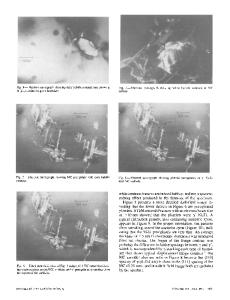Flow Softening Index for Assessment of Dynamic Recrystallization in an Austenitic Stainless Steel
- PDF / 8,671,003 Bytes
- 17 Pages / 593.972 x 792 pts Page_size
- 17 Downloads / 360 Views
ÓASM International 1059-9495/$19.00
Flow Softening Index for Assessment of Dynamic Recrystallization in an Austenitic Stainless Steel B. Aashranth, Dipti Samantaray, Santosh Kumar, Arup Dasgupta, Utpal Borah, Shaju K. Albert, and A.K. Bhaduri (Submitted March 7, 2017; in revised form May 25, 2017; published online May 31, 2017) The present study proposes a novel technique to assess dynamic recrystallization (DRX) and related microstructural phenomena during hot deformation of austenite. A ÔFlow Softening Index (FSI)Õ has been identified on the basis of investigations on elevated temperature deformation behaviour of austenitic stainless steel. This index corresponds to dominant microstructural phenomena at different deformation conditions. For this investigation, experimental results obtained from isothermal, constant true strain rate compression tests in a temperature range of 1173 (900)-1473 K (1200 °C) and strain rate range of 0.01100 s21 have been used. Resultant microstructures have been quantified using average grain size and grain size distributions. The dominant microstructural phenomena have been identified at different conditions using electron backscatter diffraction. Low FSI values are associated with the grain growth, intermediate values with DRX, and high values with the work-hardening and flow localisation phenomena. FSI also quantitatively indexes the average grain size and grain size distributions at different temperature-strain rate combinations. Analysis of the specific deformation conditions, particularly where 3.4 < FSI < 3.5, indicates a common thermo-mechanical origin of flow localisation and DRX. The potential technological implications thereof are discussed and a semi-empirical model of microstructural evolution is developed for the studied material. Keywords
austenite, dynamic recrystallization, hot deformation, instability, microstructure
1. Introduction Optimisation of any metal forming process is inherently a multi-scale problem. External process parameters such as temperature, strain level and strain rate simultaneously influence the macroscale properties (flow curves and deformation geometry) and microscale features (grain size and morphology). The changes in process parameters cause changes in microstructure. Microstructural developments, in turn, affect the flow behaviour. Such modifications in the material are interrelated across length scales. It is necessary to study the synergistic effect of these modifications to achieve a comprehensive description of material response to deformation. This entails the indexing of deformation microstructures to causal deformation conditions. At the microscale, the average grain size (Davg) is widely used to quantify development of microstructures during hot working. The resultant grain size is primarily determined by the occurrence and kinetics of dynamic recrystallization (DRX) (Ref 1-3). On the other hand, flow curves are the most fundamental representation of hot working at the macroscale. Sakai et al. (Ref 3) have used the shapes of flow curves to deduce
Data Loading...











